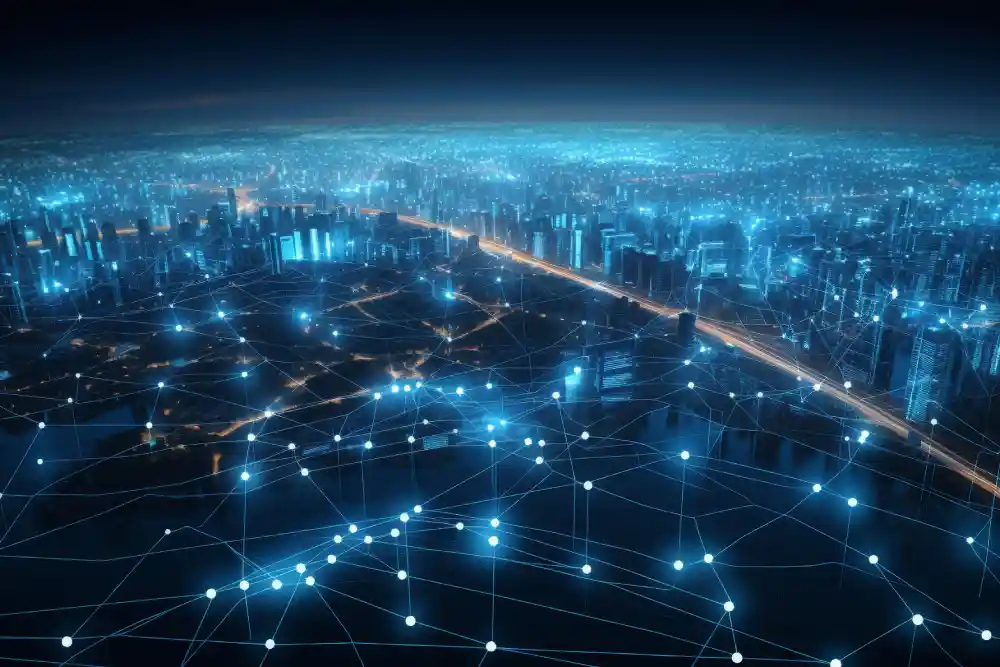Have you ever gotten the feeling lately of somebody watching you and you having no privacy? It might not be just a dream.
Between cookies, cameras, and the like, much of our access in both the real and digital worlds can be tracked. As unsettling as it might seem, these snooping methods are only about to become more sophisticated as technology advances. From browser fingerprinting to facial recognition software, the ways in which our activities can be recorded and monitored are only growing in complexity and numbers.
The latest to join the list is unobtrusive and ubiquitous Wi-Fi, an invisible pillar of modern digital infrastructure for nearly 20 years. To us, it’s mostly been a mere symbol for the Internet being “available.” But now, there’s Wi-Fi technology that can spot you where you are in a room by reading how you stand and move. Aptly named WhoFi by its makers, the researchers at Rome’s La Sapienza University, its very presence is changing the definition of privacy.

What Is the Hoopla Surrounding WhoFi?
It’s a well-known fact that Wi-Fi signals are absorbed by and can bounce off objects, including people, with every person’s body interacting with these signals in slightly different ways. WhoFi captures these very small changes by measuring details like signal phase and amplitude. The makers and researchers then trained the system to employ a neural network to learn every individual’s unique signal patterns. They used what’s called the NTU-Fi dataset, which is a standard for testing Wi-Fi sensing technology.
That’s not all; they then trained WhoFi to recognise when the same person moved to different locations or between rooms! If you’re balking at the accuracy, it achieved a 95.5% accuracy rate when it came to re-identifying individuals.

How Does WhoFi Work?
WhoFi makes a qualitative leap to “Who exactly is there?” from the earlier question of “Is someone there?” From a physical perspective, the foundation of the approach taken by the Roman scientists is the already existing CSI (Channel State Information). It describes how a transmitted signal is diminished, scattered, reflected, or bent as it travels through space, with these effects being slightly different for every individual, every environment, and every movement.
Modern Wi-Fi network cards and access points already collect this data internally in real time to optimise the radio channel. However, where this method is significant is that using commercially available Wi-Fi hardware, they were able to create radio-biometric signatures that could achieve re-identification rates of up to 95.5% under controlled conditions.
What’s also especially remarkable is that all this was done without a smartphone on the individual or cameras. In fact, in many test cases, there was no direct line of sight either, tests, with the recognition sometimes even working through walls, depending on positioning and material! This effectively catapults Wi-Fi sensing to the superior category of biometric techniques, with all of its opportunities but also along with the considerable data protection and security implications that come along with it.

How Is Wi-Fi Sensing Relevant to Security?
As ambivalent as the idea of radio waves being able to capture individual signatures might seem, the advantages for certain security applications are undeniably staggering. When properly implemented, Wi-Fi sensing can serve as a permanent and unobtrusive presence and anomaly detection system in security-critical environments such as administrative structures, energy facilities, labs, and data centres. Another potential use case is detecting low-flying aerial objects, especially drones.
Wi-Fi sensing could help in identifying low-altitude or slow targets that escape radar-based or optical systems. In fact, they could end up creating real value where other sensors are difficult to deploy socially or cannot operate, provided their use is legally compliant, transparent, and technically sound.
However, like any other piece of technology, this is also a double-edged sword, even if WhoFi isn’t available for commercial use or applications yet. Since Wi-Fi sensing doesn’t capture images or sounds, technically, it works better for privacy as it avoids collecting personal data explicitly, unlike cameras and microphones.
However, the fact that one can derive identification and movement data from commercially available Wi-Fi hardware also makes WhoFi, and other similar methods, potent cybersecurity nightmares. This applies to both digital and hybrid attacks combining cyber intrusion with physical reconnaissance.
For instance, anybody with access to CSI data or an access point could track an individual’s movement patterns and recognise them across different locations, even if they aren’t carrying any device. So, covert reidentification could become the new reality. Collecting CSI data continuously also makes it possible to surmise and deduce interpersonal interactions, preferred routes, and attendance patterns.
Profiling for targeted attacks and classical espionage could become ubiquitous. Red-team attacks could become possible by deploying rogue access points near or even within targeted networks, collecting CSI data continuously and forwarding it to the hackers. Compromised IoT devices with Wi-Fi capabilities – anything from smart speakers to door sensors and connected cameras – could become covert tracking points.

Is The Wi-Fi Tracking Threat Real?
Even though WhoFi doesn’t directly collect personal or biometric information, it can be used for covert tracking if deployed without clear safeguards, giving rise to new privacy risks. Since individuals can be monitored or tracked without their knowledge, it does raise ethical questions about surveillance and consent.
Even if WhoFi is merely an academic exercise currently, we could see something similar in use in the future, and while it presents exciting and constructive opportunities, we also have the additional responsibility of preventing its abuse.
In case you missed:
- Should I Use An Anonymous Crypto Wallet?
- Zero Trust Architecture: The Next Big Thing In Security
- How AI Can Fortify Cryptocurrency Security
- Multiplexing in Networking: An Overview
- The Future of Wearable Tech in Personalised Care
- Decoding Backdoor Attacks in Cybersecurity
- Keeping Your Tech Tidy: Tips For Data Backup And Safety
- The AI Surveillance Society: Is It Necessary or Have We Gone Too Far?
- Crypto Heists: How To Keep Your Cryptocurrency Safe?
- All About Privacy-Enhancing Technologies (PETS)










